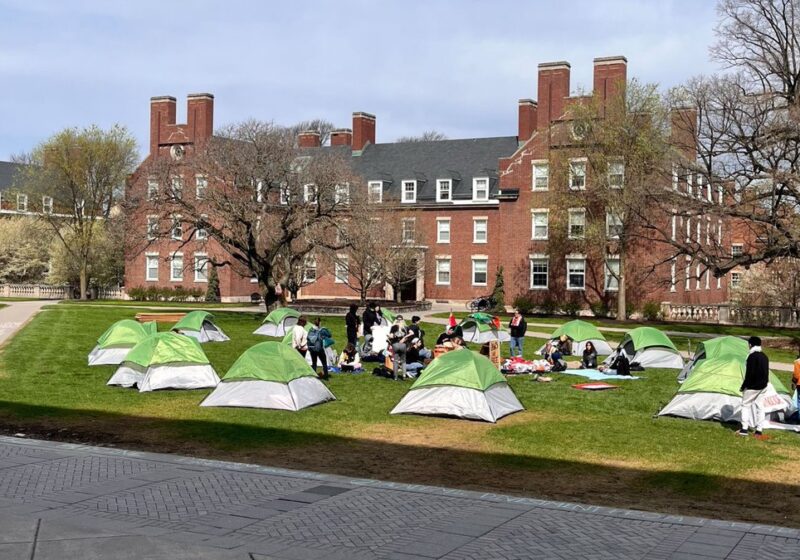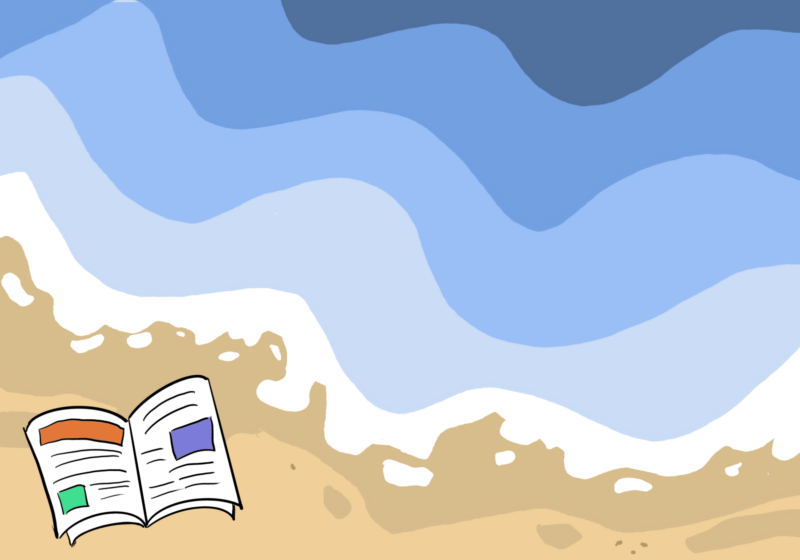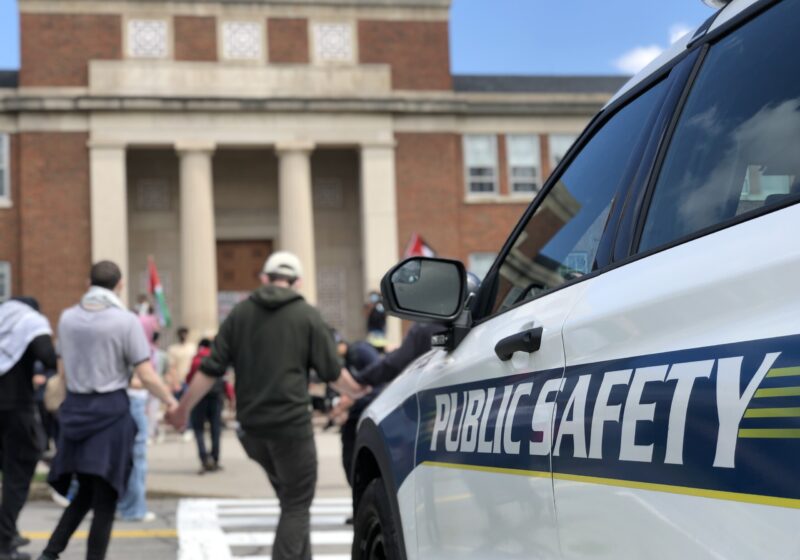“He who travels far will often see things far removed from what he believed was Truth. When he talks about it in the fields at home, he is often accused of lying, for the obdurate people will not believe what they do not see and distinctly feel,” Herman Hesse said in “The Journey to the East.”
The Eastman Wind Ensemble took a journey to the East on May 19th, 2004. After two buses and two planes, we arrived in Nagoya, Japan. It was night, and we were all exhausted from the day of travel we had just endured.
The lights were beautiful.Looking at them we knew we were far removed from Rochester. The brightly lit Japanese characters reminded us that we were far away from the United States. Only, I don’t think any of us could have guessed how far we really were from the familiar.
Each day provided new opportunities to take advantage of. With travel and concerts nearly every day, we struggled to make time for sightseeing and fun. The morning after we arrived, some took immediate advantage of our time in the East and headed over to the Nagoya Castle before we left for Nemu at 11a.m. Others explored more cultural activities, such as Internet cafs. It was at that point that I realized that English was of little help in Japan when I got blank faces when asking about the prices for checking my e-mail. As the tour went on, we found that English, as a spoken language, was unknown to the Japanese, despite American pop music playing in every imaginable public place.
Nemu was exquisite. We dined, and relaxed on the coast of Japan enjoying mineral water public baths, beautiful nature walks or even a bike ride if one was so inclined. We were almost fooled into thinking that this tour was a vacation.
Our real purpose there was for the Yamaha Band Clinic, where Mark Scatterday, our conductor, and our guest trumpet soloist, gave lectures and we played in two concerts.
After playing through our first concert, the applause was enormous. As Scatterday turned around to begin our first encore, the applause stopped on a dime and there was silence for the millisecond before our first note sounded.
It took all of us by surprise, and although we started and continued the concert without a hitch, we were all astounded by the politeness and immense joy that the Yamaha Band Clinic teachers and students got from our playing. Listening to the other ensembles from Japan play, we all agreed that the Japanese had a niche for playing precisely and together, but that our musicality would be something that they could learn from.
After playing a few concerts, we started to feel something like rock stars. At the commencement of a concert, we’d be greeted by screaming school children wanting our autographs and pictures. Each time, we’d say to them, “Can we bring you back to Rochester with us?”
Our next major pit stop was Tokyo. A huge city of lights, shopping, culture and nightlife – we were not lost in translation here. Arriving late at night, we headed out to get some sake and then had our first karaoke experience. It’s like sitting in a room watching TV, but with bad MIDI files of familiar American tunes coming out as you sing along at the top of your lungs into a microphone. Amazingly, it was more fun that I can put into words, and I will never forget that first night in Tokyo.
Hamamatsu was by far the nicest hotel that we stayed in. It was uncharacteristic since it towered above everything like a space-aged structure against a very small, unimportant town. Because this city is known for its eel, many of us ate the Japanese delicacy for dinner that night. The concert hall was the best yet, and our concert was a success.
We visited the Yamaha Factory in Hamamatsu the next day. The factory workers toured us through each portion of the factory, showing us how each instrument is made from the initial piece of metal or wood, to the final engraving on the custom made instruments. The workers took great pride in the making of an instrument, making it seem like an art. Each section of the ensemble was taken to their respective room to try out the newest and best Yamaha instruments.
They even treated many of us to free accessories. The instruments proved to be very reliable and of good quality, but some lacked the personalized sound that an instrument with slight imperfections can give.
The next major city we visited was Kyoto. We took a few days to explore the many temples and shrines that made Japan what it is today.
Some highlights were the Kinkakuji Temple, aka the Golden Pavilion, where a beautiful temple with a roof of gold stands in the middle of a pond surrounded by meticulous gardens; Nijojo Castle, which was the home of the first Tokugawa shogun and Sanju-sangendo Temple where the 1,000 buddhas, called Kannon, stand in guard of one gigantic seated buddha all made in the 12th and 13th centuries.
Kyoto’s concert hall was the most modern piece of architecture in the whole city. Acoustics were difficult with both seating and an organ lining the back of our stage, but it was an amazing experience with another fabulous audience.
After a stop in Himeji for a concert, and a look at the Himeji castle, the most magnificent of all the castles left in original form in Japan, we headed back to Tokyo for the largest and most significant concert we would give on the tour.
We started the day with a children’s concert where each section of the ensemble prepared a small excerpt of something famous or fun for the Japanese children, demonstrating to them the different instruments in a wind ensemble. This was most successfully accomplished by the percussion section’s version of “Flight of the Bumble Bee.”
Our main concert drew an audience that filled the concert hall. The Tokyo Opera City Concert Hall was itself a gem. Written about in major architectural publications, this new concert hall was designed as a shoebox shape that closed in as it got closer to the unusually high ceiling. Between the unsurpassed acoustics and visually inspiring setting, the hall has been described as a miracle by many of the world’s leading artists.
The beautiful sounds and intricacies of the Sparke Dance Movements sparkled more clearly than ever. We had really grown together musically, and it was all coming through in our Tokyo concert. As a special surprise, when we got to the Sousa marches, Donald Hunsburger, former conductor of the wind ensemble, came on stage and led the most emotionally filled Sousa I have ever played or heard in my life. The crowd mobbed us after the concert, unrelentingly asking for autographs and pictures.
Had we gone home that day, the tour already would have been a major success for all of us, however we still had a few more concerts left.
Our next stop was Taipei, Taiwan. The famous Night Market of inexpensive food and shopping proved to us that we had traversed yet another culture, one that was more individual, and one that spoke more English. We stayed in a youth hostel-like hotel, but who can complain when you’re in Taipei? The city was a little more dirty, the people were a little more gritty and another concert was completed.
The biggest surprise on the whole tour came when we landed in the little city of Macau, China. Macau had been ruled by the Portuguese who had built it into the trading crossroad between China and Europe before the British settled on Hong Kong. The European influence was hard to miss.
We walked through the streets of Macau looking like we were walking through little European streets of Portugal, taking only about an hour to see the city in its entirety. Students from the University of Macau took us on a tour and were informative and gracious to us even though we only had a short time to see the sights.
Our concert was named Genesis – an appropriate name for the program, which included Joseph Turrin’s “Hemispheres,” a piece about creation. We were greeted after the concert by a large amount of people who had traveled from all over China to have the opportunity to hear
the Eastman Wind Ensemble.
A special buffet was set up for us afterward by the personal from Macau who had worked hard to bring us there to play. We watched a video of our concert that night, laughing at all the funny looks on our faces as we played our 14th concert.
A day was too short for such a unique city as Macau, but it was time to play our final concert back in Taichung, Taiwan. The climate was hot and humid in Taichung, and, unfortunately, we weren’t the only ones who felt it.
There were cockroaches all over our dressing rooms! In the worst of circumstances, a dirty hall, terrible climate and tired from over three weeks of traveling, we shined on our last concert, squeezing beauty out of every note, knowing it was the end.
The concert was also played in homage to Scatterday, with all the guys in the ensemble slicking back their hair in Scatterday style to surprise him as he walked out to conduct us.
Though we were happy not to have to play the Sousa marches yet another time, we were sad as we played our last concert, knowing that we would miss the music, the cultures of Asia and of course, each other. We had truly become the professional Eastman Wind Ensemble, rather than merely a group of students.
Not only did we learn from playing with each other, but our mentor and beautiful soloist Jim Thompson always had an encouraging word for us.
Without the help of our stage manager, Ron Stackman, the tour would never have gone as smoothly as it did.
And of course, with out our conductor Scatterday, who inspired us musically each night, we wouldn’t have had the same excitement.
Spending a month in Asia, you become part of the culture. You learn how to walk and talk like you know what’s going on. You learn to like raw fish, and come out thinking that noodles are the greatest staple food ever invented.
You learn that international calls are expensive, and that bullet trains are far more efficient than Amtrak. You learn that having coffee and beer in vending machines is nothing less than genius. You also learn that America is everywhere.
From funny translations, to American pop music in all public places, to the McDonald’s on the corner and even the clapping that accompanied our Sousa marches as far as you go, you can never really get away from home.
Though it may be hard to believe these experiences without the realization of seeing it and feeling it, our journey to the East was nothing less than incredible. Domo Arigato Gozaimasu!
Reguero can be reached at areguero@campustimes.org.


